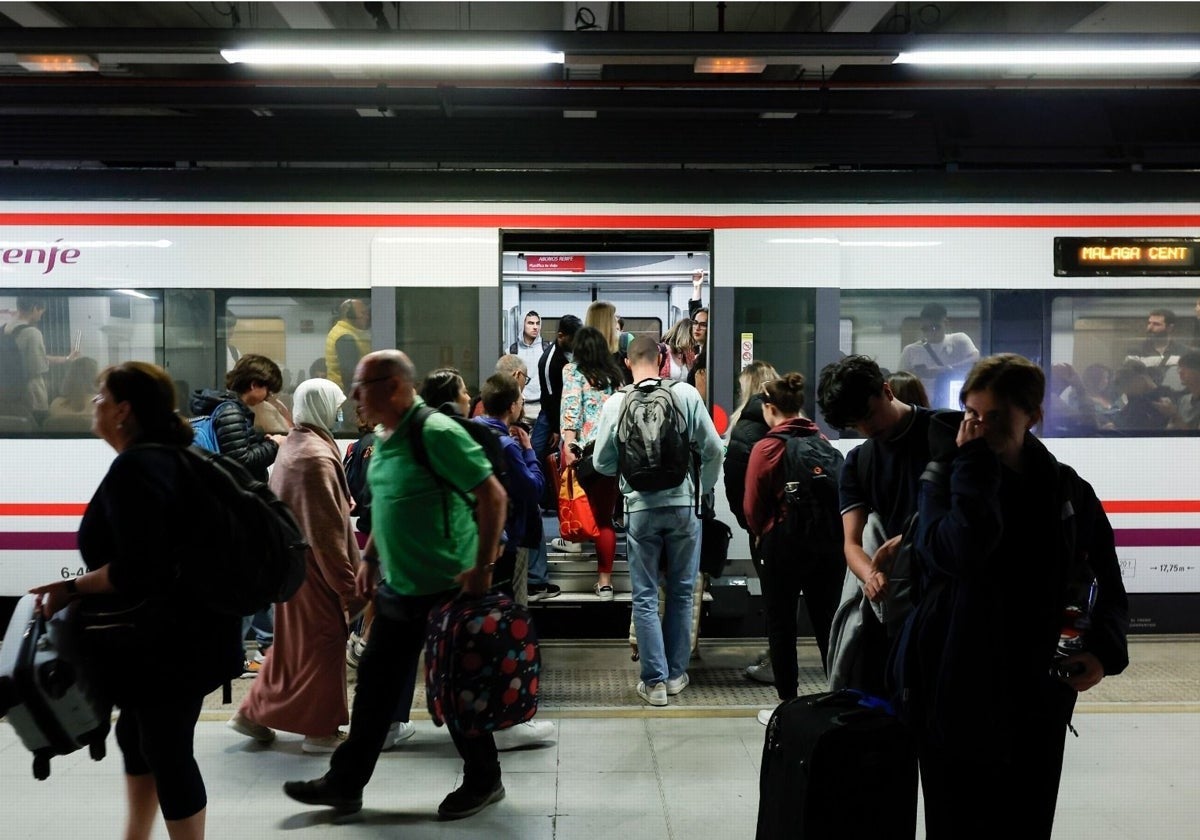Return on rail project along length of Costa del Sol would be double the necessary investment
Seopan, the national association of construction and concessionaire companies, ranks this much-demanded infrastructure among the most profitable planned in Spain
That the coastal train project along the length of the Costa del Sol would be a profitable infrastructure is beyond doubt, as it would mean having a high-capacity rail service operating in one of the most densely populated areas of Europe, where the only public transport alternative is the bus or taxi. But do we know exactly how much profit such a large investment would generate?
The answer can be found in the latest report by Spain's association of construction and concessionaire companies (Seopan), where the project appears not only as one of the most profitable actions planned at a national level, but also as one of the few where the return is expected to be twice as high as the necessary economic investment.
Seopan's study only takes into consideration the ideas that have been planned so far, that is, the renovation and extension of the existing railway line between Malaga and Fuengirola (current C1 of the short-distance Cercanías service) and its extension in two phases: first to Marbella and Estepona, and then from there to Algeciras. It does, however, mention some of the most recent ideas: "the possibility of converting the Malaga-Marbella section from the airport to high-speed".
According to Seopan's calculations, the total estimated investment for this route would amount to 6.7 billion euros, which makes the Costa del Sol rail corridor one of the most expensive works. On the other hand, Seopan highlights that the economic and social benefits of having a railway on the coastline of Malaga and Campo de Gibraltar would double the cost of the works, reaching 12.5 billion euros.
"These benefits are mainly related to time savings and CO2 emissions reduction, due to the modal shift from car to rail," the document states. Specifically, 95% of the benefits are assessed in terms of improved and reliable journey times; another 3% in terms of environmental and social improvements; and a further 2% in terms of cost savings.
The Seopan study also foresees the creation of almost 100,000 direct and indirect jobs (99,241, to be exact). In addition to this, a gross value added (GVA) of 7.2 billion is expected. This concept is a macroeconomic measure that serves to evaluate economic activity and productivity in the territory. As well as a reduction of 74.51 million tonnes of gas emissions.
On the other hand, operating costs of 169 million would be added to the necessary investment, resulting in an internal rate of return (IRR, the annual profit) of 9.8%. In conclusion, it would be a highly profitable project for a private investor.
Government proposal
However, this report dates from the middle of last year and therefore does not yet take into account the central government's Ministry of Transport latest developments. In recent months, minister Óscar Puente and his team have taken the lead in the technical and administrative promotion of this infrastructure.
Puente's idea is to create a coastal railway corridor linking the entire coastline of the Costa del Sol, in its widest extension, that is, from Nerja to Algeciras.
The contract is about to be signed with the consultancy firm that was selected in the tender on 17 March, when the contracting board proposed the winning bid by the engineering firm WSP SPAIN-APIA. Its economic proposal is almost 820,000 euros, that is, 400,000 euros less than the base estimated by the Ministry (1.2 million euros). The planned timeframe will be the same as in the tender documents, i.e. 18 months.
Now it is time to draw up the aforementioned feasibility study, which will be the first step in the long formal process so that, one day, the construction project can be approved. According to the "tentative schedule" of the work, available in the tender documents, ministry technicians have laid out three phases. As per this timeline, the first key milestone of the feasibility study will take place toward the end of phase I, when, in January 2026 (just over six months from now), the "initial alternatives study" will be released.
It refers to the route, that is, where (physically) and in what form (Cercanías, high-performance or a mix) could the platform for the railway tracks from Nerja to Malaga, and from there to Marbella, Estepona and Algeciras be built.
The forecast coincides with the announcement made by Óscar Puente, last December, when he said: "In one year, we hope to have the route of the coastal train clear." The initial idea of the ministerial technicians is to follow, whenever possible, the "affected area" of the A-7 motorway, which is a reserved space located on both sides of the road.
The second phase includes a more detailed analysis of the alternatives in the different sections into which the action has been divided (five in total). It will also examine in depth the areas and operating scenarios of the proposed alternatives, as well as the travel times, demand and profitability.
Phase III includes quality control and supporting formalities, and will be carried out in parallel to the previous two phases. The feasibility study should be ready for final approval in November 2026, with a conclusions document and a summary format for public presentation.

